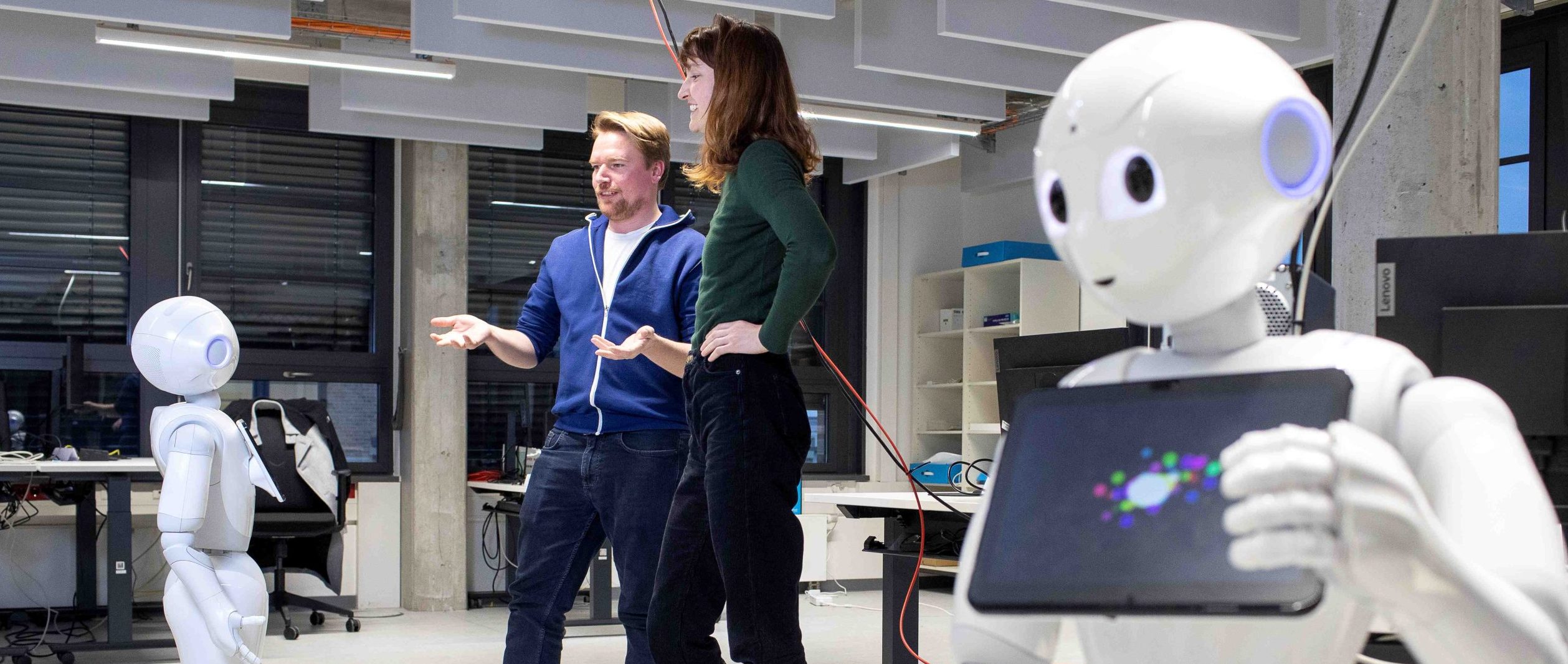Celebrating bridges in science: SCIoI’s contribution to the Alexander von Humboldt Foundation’s annual alumni event
On 27 June, the Alexander von Humboldt Foundation’s Annual Alumni Event took place in Berlin, bringing together over 560 scholars and 1000 guests from 70 nations. Themed under the hashtag #AvHBridgeBuilders, the event highlighted global scientific dialogue and cultural exchange, backed not only by several partner institutions such as Science of Intelligence (SCIoI) but also supported by several German Ministries and the presence of Germany’s President, Frank-Walter Steinmeier.
An important part of the event for researchers was the scientific program, the so-called ‘Humboldt Lunchtime Fair’. The large and varied scientific program included lab and campus tours, as well as lectures. The Humboldt Lunchtime Fair was intended to offer scientists a networking platform at TU Berlin and foster scientific exchange. SCIoI gave the visiting scientists an insight into their work and the aims of the Cluster to a very interested, international and well-connected scientific audience.
Hands-on demo engagements at SCIoI Labs
For some of the participants, a key highlight has been the visit at Science of Intelligence, where they received detailed insights into intelligence research from the interdisciplinary research practices. SCIoI hosted a Lab Tour titled “Robotic Revelations: Exploring the Principles of Intelligence” for the foundation’s alumni, demonstrating how AI and robotics can address real-world problems and offering the visitors a glimpse into future technological potentials.
The tour showcased the Čapek and Asimov labs, where attendees experienced innovative demonstrations of swarm robotics, human-robot interaction, and bio-inspired problem-solving.
SCIoI member Vito Mengers demonstrated “Differentiable Interconnected Recursive Estimation,” exploring robotic perception and intelligence. Oussama Zenkri engaged attendees with an “Escape Room – Solving Mechanical Puzzles” demo, illustrating advanced problem-solving strategies in robotics, inspired by human cognition.
Another part of the tour highlighted human-robot interaction through demos like Jonas Frenkel’s “Pepper – Learning in Human-Robot Interaction,” which examines nonverbal communication for “social” robotic systems. The tour also featured a dynamic demonstration: “CoBe – Interactive Fish Swarm Projection” by members Palina Bartashevich and David Mezey, showcasing how mixed reality systems can help us close the gap between natural, simulated and robotic systems to better understand and synthesize collective behavior.
Common efforts for enhanced impact
The theme of building bridges resonated deeply throughout the event. The State Minister at the Federal Foreign Office, Katja Keul, highlighted the need for people who can forge connections and collectively seek solutions – a sentiment that perfectly captures the aim of both the Humboldt Foundation’s and SCIoI’s mission.
The significance of these collaborative efforts are evident: They not only foster academic and cultural exchanges but also pave the way for future partnerships that transcend borders and disciplines.
As the organizers of the event reflected on the success of the 2024 Annual Meeting, it was clear that the contributions of institutions like SCIoI are not just beneficial but essential. Their involvement ensures that the scientific dialogue is enriched with fresh perspectives and that the legacy of the Humboldt Foundation continues to inspire and facilitate scientific excellence worldwide.





